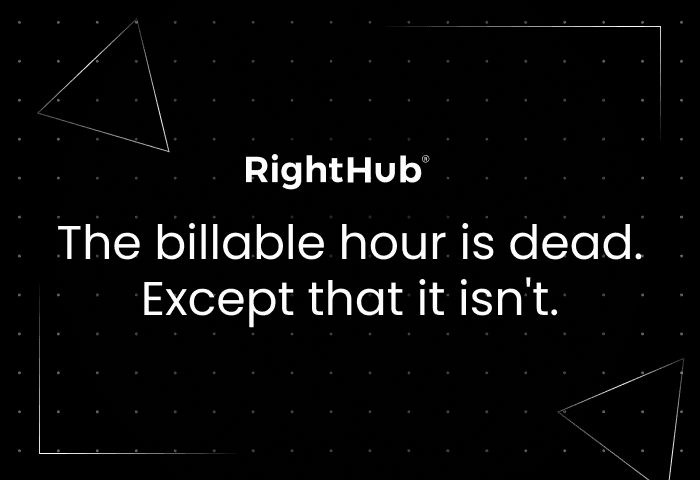The billable hour is dead. A quick Internet search will provide a selection of obituaries ranging from confident predictions of gloom to irreverent and somewhat gleeful 'bon voyage' elegies. But are they premature?
To no one's surprise, the answer is: it depends.
In the very precise and yet complex style that perhaps only the legal industry can achieve, the billable hour is dead and yet very much alive. A sort of financial zombie lurching through the accounting department of law firms everywhere, if you will.
This duality is beautifully summed up by a 2017 article by the Legal Tech Blog titled "Death of the billable hour - rise of legal tech?" They describe the confusion to one of definition and a 2017 report by the Georgetown Law's Center for the study of the legal profession and Thomson Reuters Legal Executive Institute entitled "State of the Legal Market" as saying:
"One of the most potentially significant, though rarely acknowledged, changes of the past decade has been the effective death of the traditional billable hour pricing model in most law firms. This isn’t to suggest that most firms have done away with billing based on hours worked, indeed the majority of matters at most firms are still billed on an hourly basis."
It is clear that in understanding the celebration of the demise of the billable hour, that we are talking about the death of a client-facing pricing model rather than an internal measurement of business value contributed by lawyers working at the firm. It is that definition of the billable hour that is very much alive and well.
How does this shift affect IP law firms in particular?
It's said so often that it seems irrelevant but the volume of manual work in routine IP management practice is a showstopper in many ways, not least when it comes to client-facing pricing models for that work. Flat fee arrangements are a common practice for more routine kinds of work and the combination of flat fees, the volume of manual work and a certain 'je ne sais quois' element to how many hours any particular renewal, registration or monitoring service might actually take, gives rise to fundamental concerns about profit margins - a creature whose existence in law firms is rather more credibly under threat than the billable hour!
In our white paper "Consumption pricing in the IP industry", we took a look at the factors that tie into the average IP law firms ability to achieve the kind of work flows and pricing models that grow their business, increase revenue and create sustainable profit margins.
The 2020 Altman Weil report "Law Firms in Transition" found that just over 90% of lawyers agreed that competition on pricing between firms is a legal market trend that is here to stay. If you will be forced to compete on price and you cannot reduce the hours that manual tasks take, then the result is to reduce the flat fees that clients now demand. To do so is to charge less for your lawyer's time than you pay them.
Add in the all-too-frequent free services that many IP law firms offer to their clients as the price of doing business and retaining their business and it is difficult to see any potential for growth in that market. Core to any unified position on this topic is the understanding that is the way in which we manage routine IP work that must change to both satisfy clients and increase profit margins.
It is this fact that creates such opportunities for legal technology companies in the IP space to contribute in a meaningful to change that benefits the entire eco-system. If lawyers must do more with less (and they must), then it is the role of legal technology companies to provide intelligent tools to help them and excitingly, that future is now here.
